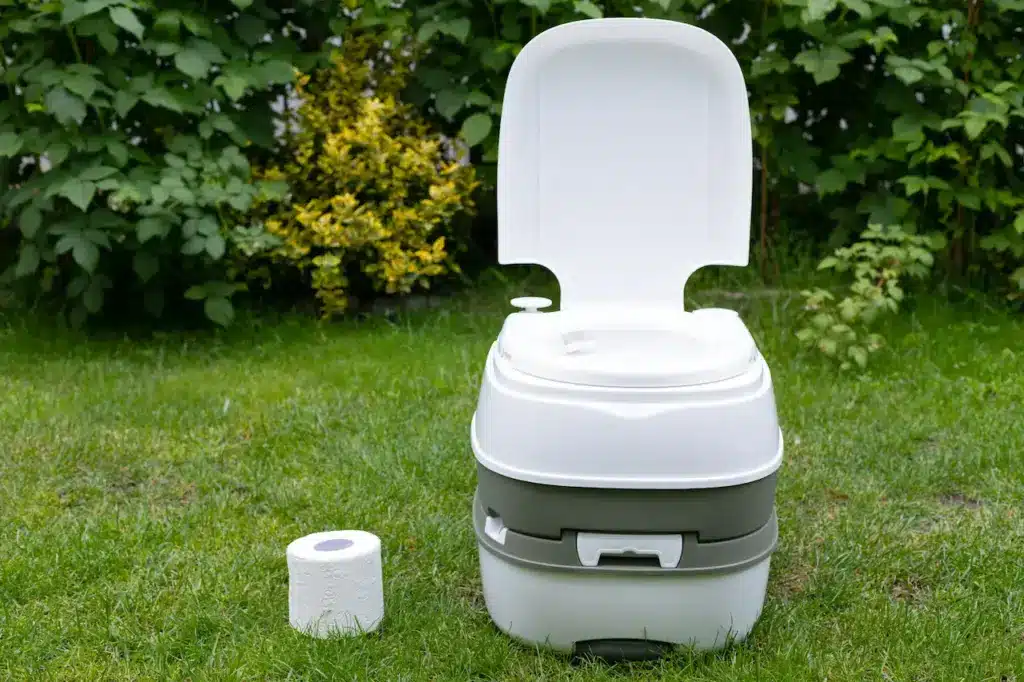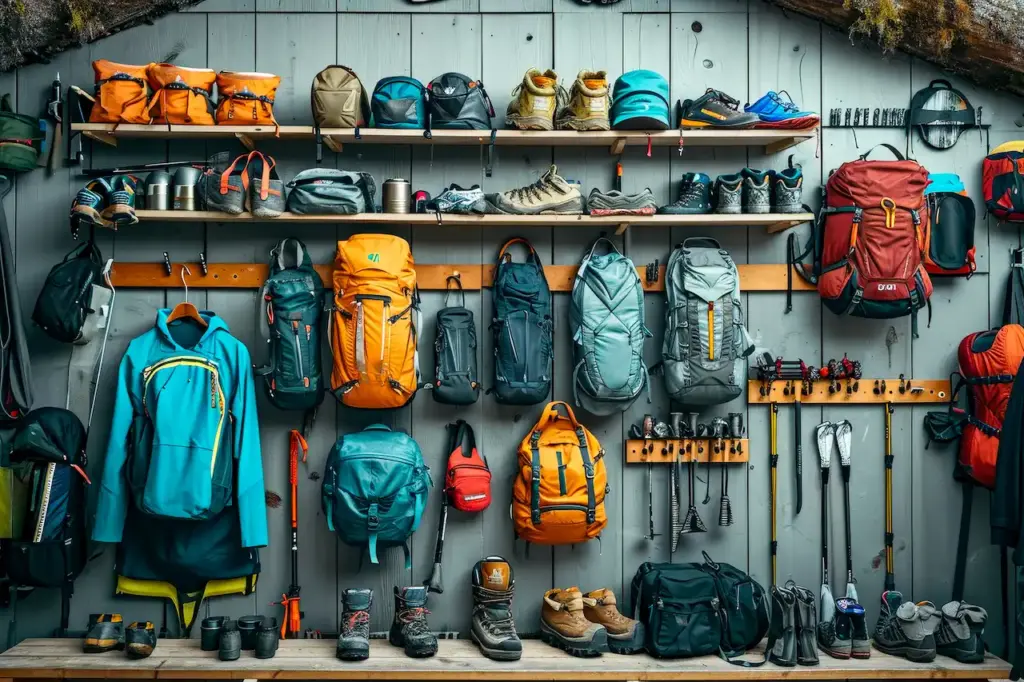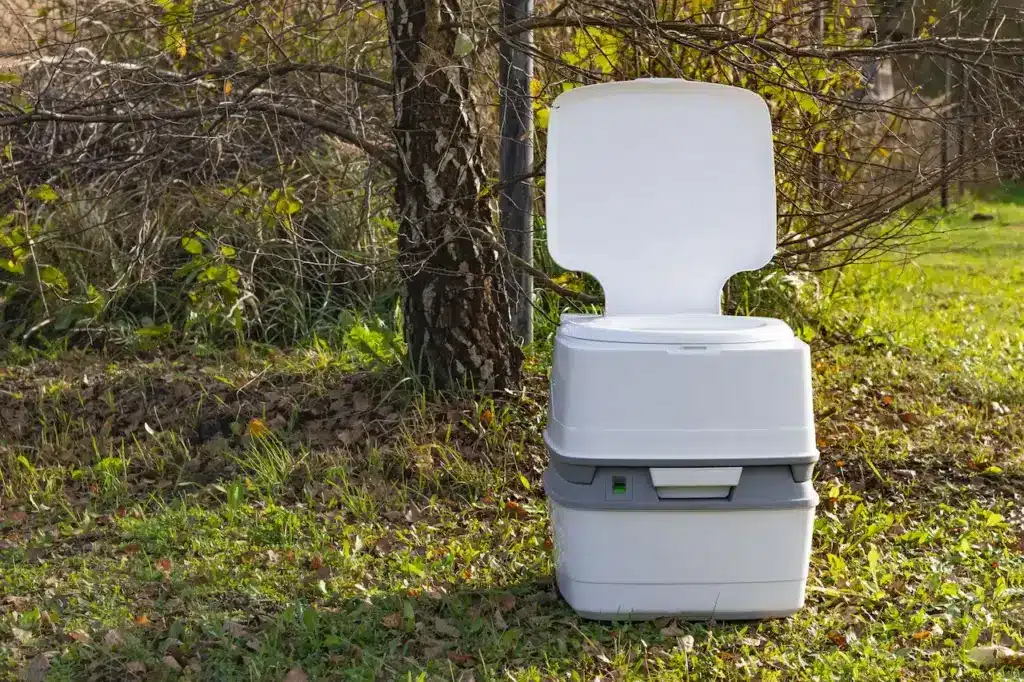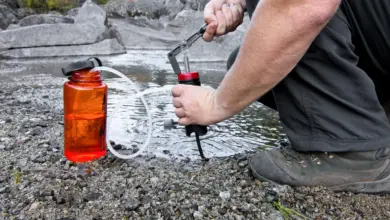How to poop in the woods? Whenever we pursue outdoor activities, the opportunity arises for us to get in touch with nature and escape from the tiresome routine of everyday life. Nevertheless, there is a need to discuss another part of being out in the wild, which is rarely done – defecating in the woods.
This guide seeks to enlighten those who love outdoor activities on how they can safely and responsibly relieve themselves while out in the wild.

By learning and applying appropriate skills, we ensure not only our well-being but also our natural habitat’s unspoiled beauty. Let’s go on this quest of understanding how one can be both a respectful and equipped outdoor explorer.
Preparing for Pooping in the Woods
To have a good experience while answering the call of nature, one must be prepared. In this section, there will be essential tips and strategies needed to prepare for this natural yet often overlooked aspect of outdoor adventures.
Planning Ahead
It is true that if you fail to plan, you are planning to fail even when you are about to relieve yourself in the wilderness. When hiking or camping, it is important that one can anticipate the urge to relieve oneself. First, familiarize yourself with the area you’ll be visiting. Find out if there are any public toilets or areas set apart for human waste disposal. Waste management regulations in the wilderness should, therefore, be clearly understood.
Some places require you to pack out your waste, while others allow burying it. Study these rules beforehand so as not to offend the environment and be aware of local laws. Do not also forget what you eat before going on such journeys. For instance, taking foods that are easily digestible can help reduce the urgency and frequency of taking a bathroom break.
Supplies to Bring
Being well-equipped is vital for a hassle-free experience. Key supplies include:
- Toilet paper or biodegradable wipes: Opt for eco-friendly options that break down easily.
- Hand sanitiser or soap: Maintaining hygiene is non-negotiable.
- A small shovel or trowel: Essential for digging a cathole if burying waste is permitted.
- Waste bags: Necessary if you’re in an area where you must pack out your waste.
- Scent-proof bags: To store used toilet paper if you can’t leave it behind.
- Portable toilet (optional): For those preferring a more comfortable experience.
Carrying these items ensures you’re prepared for any situation, respecting both nature and your personal hygiene.

Choosing a Location
Selecting the right spot to relieve oneself is crucial for environmental protection and personal privacy. Follow these guidelines:
- Distance from water sources: Stay at least 200 feet away from lakes, rivers, and streams to prevent contamination.
- Soil type: Choose a spot with rich, organic soil that aids in faster decomposition.
- Privacy: Find a secluded area away from trails and campsites for privacy and respect for other adventurers.
- Sun exposure: Sunlit areas help in faster breakdown of waste.
- Leave No Trace principles: Always adhere to these to minimize your impact on the environment.
By conscientiously choosing a location, you contribute to preserving the natural beauty and cleanliness of outdoor spaces.
Pooping in the Woods in Winter
There are different challenges that winter camping and hiking bring, especially when it is time to answer the call of nature. Cold weather, snow, and hard ground make pooping outside more difficult compared to other seasons.
Pooping on snow calls for extra concern to ensure that you have no marks left behind and the place remains as sanitary as possible. The first thing to consider is where best you can find a location for your activity. However, you should still keep at least 200 feet away from water sources, trails, or campsites.
However, in snowy conditions, you also need to consider the depth and stability of the snow. This means avoiding areas where after melting your waste may be exposed.
After finding an appropriate area, dealing with frozen ground becomes another hurdle. Digging catholes which are normally used during warm months becomes difficult in winter. Here you have many options available.
Packing It Off
When digging is not possible, you will have to pack out your waste. This means having with you a portable, sealable container or bag commonly known as a WAG (Waste Alleviation and Gelling) bag. They are made in such a way that they contain human waste and neutralize odour. Once used, the bags can be sealed and carried out of the wilderness for proper disposal.
Using WAG Bags
During the winter season especially, going for WAG bags is the best option when it comes to packing out human waste. Mostly, these bags have a substance that forms gels from moisture and at the same time removes bad smells making them a hygienic and environmentally friendly choice.
On using a WAG bag, it is necessary to follow directions precisely so that the bag gets closed right before storing such that there would be no leaks or rupture.
Camping Toilets
Portable camping toilets offer an alternative for those who want more comfort without direct contact with nature. These toilets come in different shapes including simple buckets or more sophisticated flushing models.
Therefore when one uses a camping toilet; it is important to use this facility in combination with a waste bag system which allows all refuse to be contained inside so as to be packed out later on.

Leaving It Out
In the case of some remote areas, leaving human waste out in the open might be the only choice that is available. However, this should only be done responsibly if burying or packing out is not possible.
In order to minimize visual influence and prevent wildlife from disturbing it, snow must cover any such waste left behind. Nonetheless, this method ought to be employed as a last alternative and used specifically where it is acceptable.
Pooping in the woods during the winter requires more planning and thoughtfulness. Just pack it out or use WAG bags; camping toilets are important but sometimes you have to leave it out and there are those specific cases when you will do so; just plan ahead for such winter challenges.
Remember that hygiene matters while keeping ecological balance unharmed.
Hygiene Considerations
Maintaining good hygiene while relieving yourself in the woods is paramount, not just for personal comfort but also to prevent the spread of bacteria and diseases. This section delves into the crucial aspects of hygiene that outdoor enthusiasts should adhere to when nature calls.
Toilet Paper
The use of toilet paper in the wilderness is a subject of much debate. While it is a necessity for most, how it’s used and disposed of is crucial for environmental protection. The best practice is to use biodegradable toilet paper and bury it in a cathole, at least 6 to 8 inches deep, along with your waste.
However, in areas where burying is not allowed or in winter conditions where the ground is frozen, carrying a sealable bag to pack out used toilet paper is the responsible choice. It’s important to never leave toilet paper under rocks or hidden in bushes, as this can be harmful to wildlife and is not in line with Leave No Trace principles.
Hand Hygiene
Hand hygiene is perhaps the most critical aspect to consider for maintaining health in the wilderness. After relieving yourself, it’s essential to clean your hands thoroughly. Carrying a small bottle of hand sanitiser is a practical solution. In situations where water is available, use biodegradable soap to wash your hands.
Remember to do this away from natural water sources to prevent contamination. Keeping your hands clean is not just about personal comfort; it’s about preventing the spread of germs and protecting the environment.
Practicing Good Overall Hygiene
In addition to focusing on hand hygiene and responsible toilet paper use, practising good overall hygiene is vital. This includes being mindful of where you relieve yourself and ensuring that you are far from water sources, trails, and campsites.
If you’re camping for multiple days, consider how you will manage menstrual hygiene, if applicable, and plan for odour control. Using scent-proof bags for waste and waste-related items is a good strategy. Also, be aware of the local wildlife and ensure that your hygiene practices do not attract animals to your campsite.
Maintaining hygiene while pooping in the woods is not just a personal responsibility; it’s a collective effort to preserve the wilderness for everyone to enjoy. By adhering to these practices, you contribute to a safe, healthy, and enjoyable outdoor experience for yourself and others.
Additional Helpful Tips
Successfully navigating the challenges of pooping in the woods involves more than just knowing the basics. It requires a blend of preparedness, respect for nature, and practical wisdom. In this section, we offer some helpful hints to enhance your outdoor experience while ensuring environmental responsibility.
Go Before You Need to Go
One of the simplest yet most effective strategies is to relieve yourself before heading out on your hike or activity. Establishing facilities at a trailhead or campsite can minimize the need to go in the woods. This proactive approach not only reduces your impact on the environment but also makes your outdoor experience more comfortable and enjoyable.
What About Going Pee?
While this guide focuses on pooping in the woods, it’s also important to address the matter of urinating in the wilderness. The principles are similar: maintain distance from water sources, trails, and campsites.
For women, products like a female urination device can be helpful. As with other waste, if you use toilet paper, be prepared to pack it out in a ziplock bag or bury it properly. Additionally, always be aware of your surroundings and choose a spot that offers privacy while respecting the environment and other hikers.
Following these helpful hints can significantly improve your experience of pooping in the woods. By planning ahead, being mindful of both solid and liquid waste, and employing practical strategies, you can enjoy your outdoor adventures with confidence and responsibility. Remember, the goal is to leave no trace, ensuring that our natural spaces remain pristine and enjoyable for everyone.
FAQs
Is there any solution in case there are no trees or bushes to provide privacy?
Obtaining seclusion in open landscapes such as deserts, high alpine environments, or beaches is complicated. In this regard, it is recommended that one should keep himself away from trails and campsites. An individual can also use the buddy system where they walk together but the distance between them is about 20 meters.
Also, you may make a hasty screen of privacy using backpacks, walking poles, and a sheet of plastic. Nonetheless, always respect Leave No Trace principles and ensure that your chosen spot has appropriate facilities for waste disposal.
How do I deal with going to the toilet when trekking long distances through forests?
Long hikes need more planning regarding waste management. Think about possible facilities and rules for human waste on the route before a hike. Many long trails have designated areas or require you to carry portable toilets such as WAG bags.
Could I use natural items in place of toilet paper?
Using natural materials such as leaves, smooth stones, or snow is one option, and it requires some knowledge and caution. First of all, make sure that the leaves do not contain poisonous chemicals or irritants; stay away from plants like poison ivy or oak. Smooth stones also work well but must be used with care to avoid injury. During winter months, snow is a good alternative as it is clean and efficient.
Also, ensure that these materials are buried in a cathole alongside your waste afterwards. However, if unsure about the safety of natural materials, or local laws dictate carrying out all solid waste types- opt for bio-degradable toilet papers to carry along when hiking.
Is it okay to bury my waste in all outdoor environments?
Not every outdoor environment allows for waste burial. For instance, burying waste can create environmental problems in some eco-sensitive areas like high-altitude regions, deserts, or regions with thin/rocky soil.
In such areas, decomposition takes a long time; thus water sources may get contaminated by this wastage or the waste may be dug up by animals.
What environmental damages occur when human waste is poorly disposed of?
When human waste is not disposed of properly in the wilderness, it can damage the environment. If water sources are contaminated, for instance, there may be an outbreak of diseases such as giardia and E.coli that could affect humans and animals. Additionally, this may alter soil fertility and destroy local vegetation.
Wild animals can be attracted to human dung thus changing their feeding habits and normal patterns. Moreover, it spoils the beauty of nature depriving other visitors of satisfaction from its contemplation. Therefore appropriate disposal approaches should be followed without failure to preserve these ecosystems while ensuring safety and comfort to everybody.
What should I do if I accidentally defecate close to a water source?
If you have ever mistakenly pooped near a water source, the immediate response needed is to reduce environmental pollution. Start moving away waste from the water source.
If feasible and allowed by law in the place, use a trowel to properly dig up the waste and dispose of it into catholes that are at least 200 feet from any water routes or campsites. Afterwards, bury the waste in the cathole following a typical depth recommendation of 6-8 inches.
In situations where this is not possible or realistic such as areas with strict rules on burrying or frozen ground, utilize a WAG bag or similar means of transporting feces out of there. If this happens then scoop waste carefully into the bag without polluting its surroundings.
Conclusion
Often not thought of, pooping in the woods while overlooked is an indispensable attribute of responsible outdoor recreation. It has given insights and tips to manage this natural need with regard to nature and other people, which have already been discussed in this guide. We have covered necessary aspects such as preparedness and hygiene alongside addressing particular challenges in different environments to equip you with knowledge on managing waste responsibly amidst wilderness.
Remember that the secret lies in planning; respecting nature; and following Leave No Traces principles during camping expeditions. This way, we enhance our cleanliness and comfort as well as protect the beauty of these spaces by preserving their ecological equilibrium. Irrespective of whether you are an experienced walker or just a camper, appropriate involvement in all these activities will make your outdoor experience more enjoyable and keep wild places unspoiled for future generations.



